
Quick Summary
Table of Contents
India, the world’s largest democracy, has seen great leaders serve as the President of India, each contributing in their unique way. The role of the President is largely ceremonial, but it carries immense respect and importance. From Dr. Rajendra Prasad to the current President, every leader has played a vital role in shaping India’s history and democracy.
In this article, we will walk you through the complete list of Presidents of India, their tenures, and their major contributions. This will help you understand how India’s leadership has evolved over time.
The President of India is the head of state in the Indian parliamentary system and is elected by the Electoral College. The list of President of India includes notable figures such as Dr. Rajendra Prasad, the first President, to the current President, Draupadi Murmu. The role of the President is to represent the unity of the nation and uphold constitutional duties, such as appointing the Prime Minister and granting pardons. However, real executive power resides with the Prime Minister and the Council of Ministers. This article will explore the list of President of India and their contributions.
The President of India is the constitutional head of the country. Though the position is largely symbolic, it holds great importance in upholding the Constitution and democratic values. The President is also the commander-in-chief of the armed forces and is responsible for approving laws passed by the Parliament.
The Indian Presidency is the most important one that holds India’s democratic values and unity in diversity. This plays a crucial role in the functioning of the Indian government. And also in maintaining the constitution. It also helps in promoting national cohesion. Presidents of India are providing stability in Indian politics.
In the list of President of India, The current and 15th president of India is Droupadi Murmu, who was elected to the position in July 2022. Murmu is the first tribal president of India and only the second woman to hold the office of the president in the country. Before becoming president, Murmu served as the governor of Jharkhand state from 2015 to 2021.
As a tribal woman from Odisha, Draupadi Murmu represents a historic first in occupying the highest constitutional office in the country. Her election to the presidency has great symbolic significance for India’s tribal populations.
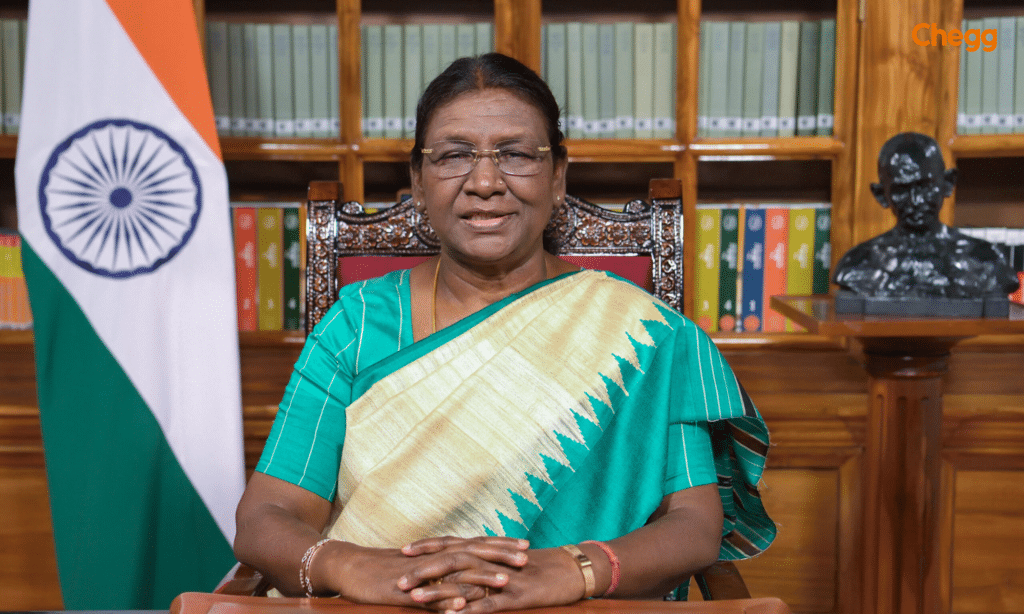
Through the use of a single transferable vote and proportional representation, the president is chosen. Through the impeachment process, a president can be removed.
The following list of qualifications is for the position of President of India:
The President of India holds a profound place in the hearts of Indians. Let us discuss a few details about our first President and a Scholarly President Sarvepalli Radhakrishnan.
Rajendra Prasad was the first President of India from the year 1950 to 1962. He was also a lawyer and critical figure during India’s freedom struggle. One of the renowned leaders in the Indian National Congress. Rajendra Prasad has also participated in non-cooperation and civil Disobedience Movements.
He helped in drafting and adopting the Indian Constitution. He also worked in assisting democracy. The challenges he faced included the Indo-China border dispute, economic struggles, and integration of princely states.
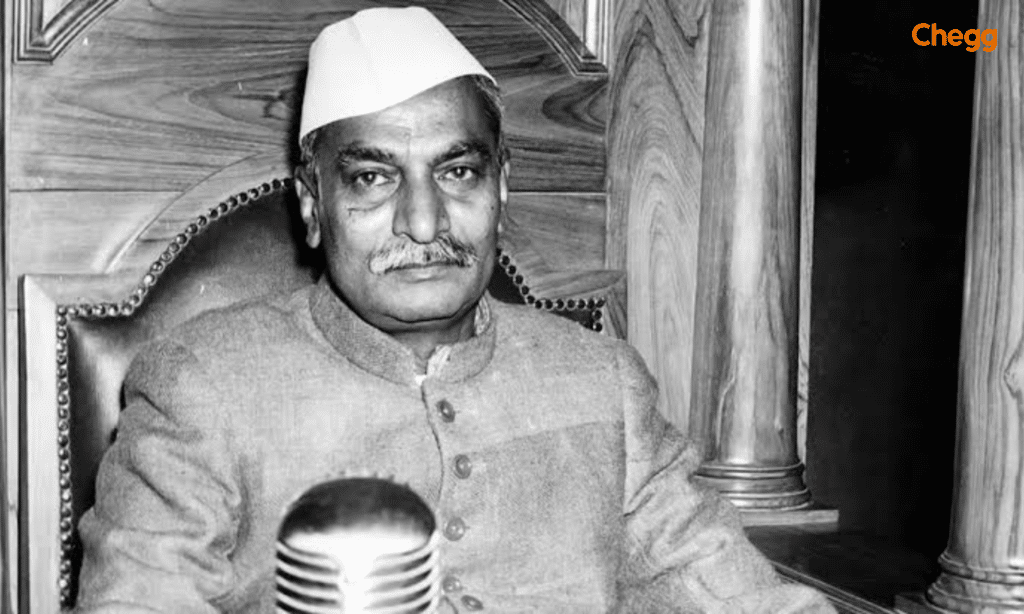
Sarvepalli Radhakrishnan was a renowned philosopher and scholar. He was the second president of India. He promoted the idea of religious tolerance. Advocated for the philosophical basis of Hinduism. He presented this throughout the globe through his writings. He also gained recognition for his work on Eastern and Western philosophical thought. This earned him international recognition.
Through his role as president of India (1962 – 1967), he promoted education and culture. He emphasized the importance of knowledge and moral values in building the nation. And honoured educators by celebrating Teachers Day on his birthday ( September 5).
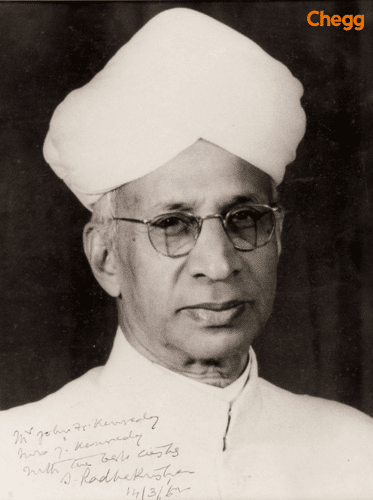
Our respectable presidents have faced a lot of challenges during their ruling period for our nation’s growth. Let us see the List of President Of India and their contribution to our country India.
| Name of the President | Starting date | Ending date | In 1967, he was chosen to be the Vice President of India. Due to Zakir Hussain’s unexpected passing while in office, he only held the office for a brief period. |
| Rajendra Prasad | 13 May 1957 | 13 May 1962 | Rajendra Prasad was elected president twice. Before being chosen for this position, he served as president of the Constituent Assembly. |
| Sarvepalli Radhakrishnan | 13th May 1962 | 13 May 1967 | The writer and philosopher Radhakrishnan was widely known. He was vice-chancellor of Banaras Hindu University as well as Andhra University. |
| Zakir Hussain | 13 May 1967 | 3 May 1969 | He was the recipient of the Bharat Ratna and Padma Vibhushan. He died in office, leaving the shortest tenure of any president. |
| Varahagiri Venkata Giri | 24 August 1969 | 24 August 1974 | In 1967, he was chosen to be the Vice President of India. Due to Zakir Hussain’s unexpected passing while in office, he only held the office for a brief period of time. |
| Fakhruddin Ali Ahmed | 24 August 1974 | 11 February 1977 | In 1967, he was chosen to be the Vice President of India. Due to Zakir Hussain’s unexpected passing while in office, he only held the office for a brief time. |
| Neelam Sanjiva Reddy | 25 July 1977 | 25 July 1982 | He was Andhra Pradesh’s first chief minister. He was the youngest President to hold office, having run twice for the presidency and taken over Rashtrapati Bhavan. |
| Giani Zail Singh | 25 July 1982 | 25 July 1987 | He served as both the Union Home Minister and the Punjab Chief Minister. |
| R. Venkataraman | 25 July 1987 | 25 July 1992 | In recognition of his services to the Indian freedom movement, he was awarded the “Tamra Patra.” |
| Shankar Dayal Sharma | 25 July 1992 | 25 July 1997 | He served as both the Indian Minister of Communications and the Chief Minister of Madhya Pradesh. |
| K. R. Narayanan | 25 July 1997 | 25 July 2002 | He represented India as an ambassador to the US, China, Thailand, and Turkey. |
| A. P. J. Abdul Kalam | 25 July 2002 | 25 July 2007 | He was a key figure in the development of India’s nuclear and ballistic missile programs. He received a Bharat Ratna as well. |
| Pratibha Devisingh Patil | 25 July 2007 | 25 July 2012 | Pratibha Patil served as India’s first female president. |
| Pranab Mukherjee | 25 July 2012 | 25 July 2017 | In 1997, he received the Best Parliamentary Award. In 2008, he was also awarded the Padma Vibhushan. |
| Ram Nath Kovind | 25 July 2017 | 25 July 2022 | He was the Governor of the state of Bihar. |
| Droupadi Murmu | 25 July 2022 | Incumbent | She has held the office of Jharkhand governor before. |
Zakir Hussain was India’s third president (1967-1969). He promoted the unity of the nation and communal harmony. Zakir Hussain also advocated religious tolerance and India’s diverse communities.
He also emphasized respect among different religious and cultural groups. And strengthened unity and secularism.
V.V. Giri was the fourth President of India from the year 1969 to 1974. In 1975 he gave his assent to the Bank Nationalization Bill. He led to controversies as he acted against the government’s advice. Even under this peer political pressure, he showed his dedication to maintaining the constitutional norms that rule his office.
He upholded the framework of democracy. He ensured the integrity of the presidency. Preserved the nation’s democratic institutions. He upholded the democratic fabric. He also adhered to the constitutional principles of India. His commitment maintained India’s democratic values.
Fakhruddin Ali Ahmed was India’s fifth president. He served for the country from 1974 until he died in 1977. He was a lawyer and a politician. Fakhruddin Ali Ahmed has contributed to Indian National Congress and many government positions before the president position.
Neelam Sanjiva Reddy was India’s sixth president. He served for the country from the year 1977 to 1982. Initially, he started his career in the Indian National Congress. Then, joined the Janata Party. He served as the speaker of the Lok Sabha and chief minister of Andhra Pradesh.
Giani Zail Singh was India’s seventh president (1982-1987). His roles include chief minister of Punjab. His tenure left a mark on Indian politics as he faced important political events like Operation Blue Star.
He was India’s eighth president (1992-1997). He has also held positions like Chief Minister of Bhopal and Cabinet Minister. As the president, he contributed to strengthening India’s democratic values.
He was India’s tenth president (1997-2002). K. R. Narayanan was the first Dalit to practice the presidency. K. R. Narayanan contributed to our country India by breaking barriers of caste discrimination. He had a different diplomatic career. And has also served as India’s Ambassador to the United States. Presidents and India’s Technological Progress
The President of India not only used their strategy, but a few of them used their educational knowledge. The nation used science and technology for progress. Let us see how they used them.
The President of India plays a crucial role in the country’s governance, serving as the head of the executive, legislature, and judiciary. The election, qualifications, and impeachment process of the President are governed by Part V (The Union), Chapter I (The Executive) of the Indian Constitution, specifically under Articles 52 to 78.
The President is elected by an Electoral College, which comprises:
The election follows a preferential voting system using the single transferable vote method. This means voters can indicate their preferences for candidates, and if a candidate does not secure enough votes in the first round, the second-choice votes are considered.
The President of India holds various powers across different branches of governance:
This system ensures that the President functions as a constitutional authority, maintaining the balance of power in the Indian democracy.
Ramaswamy Venkataraman, India’s 8th President from 1987 to 1992, was the first head of state with a background in science. Venkataraman pursued higher studies in physics and law, becoming an advocate of the Madras High Court in 1935. As a President with a scientific temperament, he rationalized decision-making and advocated technological advancement in India.
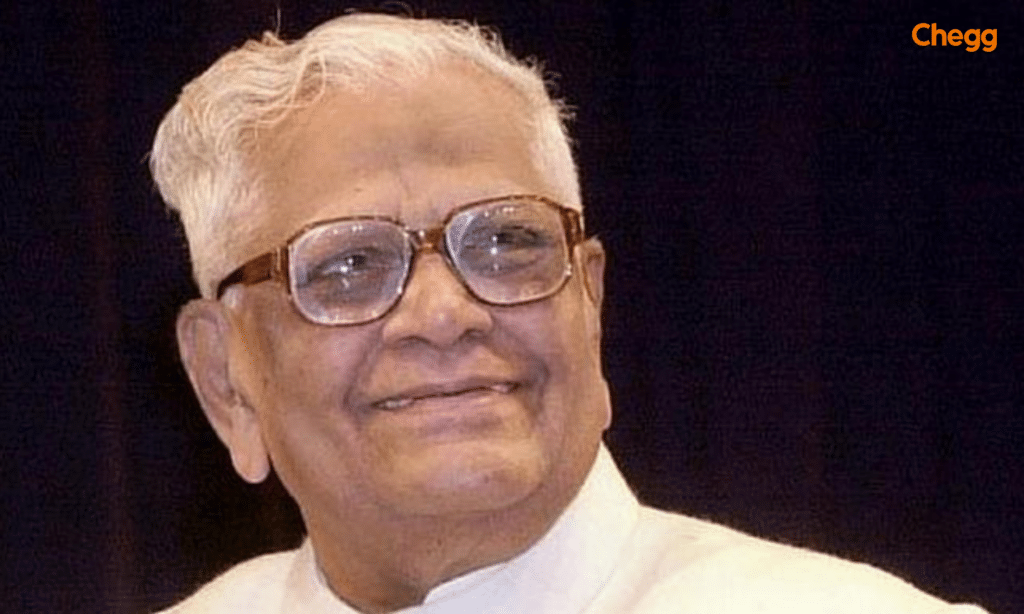
Avul Pakir Jainulabdeen Abdul Kalam, the hugely popular 11th President from 2002 to 2007, was affectionately known as the ‘People’s President’. An accomplished aerospace scientist, Kalam came from humble beginnings but went on to lead key missile programs. As President, he energized youth through inspirational speeches and a vision for a developed India. He addressed many social challenges. He also inspired a lot of the youths with his commendable work by empowering the youth.
His vision for 2020 is to transform the Indian nation into a knowledgeable and economically rich by the use of science and technology. This shows his hope in science, research, and technology.

In the modern world, feminists are fighting for gender equality. Pratibha Patil was the first woman president who won gender equality and addressed the major problems to solve them.
The first woman President of India(2007) was Pratibha Patil. It was a great moment where gender equality won. Pratibha Patil inspired many women across the world with her commendable role. She represents the empowerment of women in politics.
She also addressed the importance of education. And increased the economic opportunities for women. She also worked to reduce poverty and healthcare access was improved. Her most commendable work was her focus on the marginalized communities.
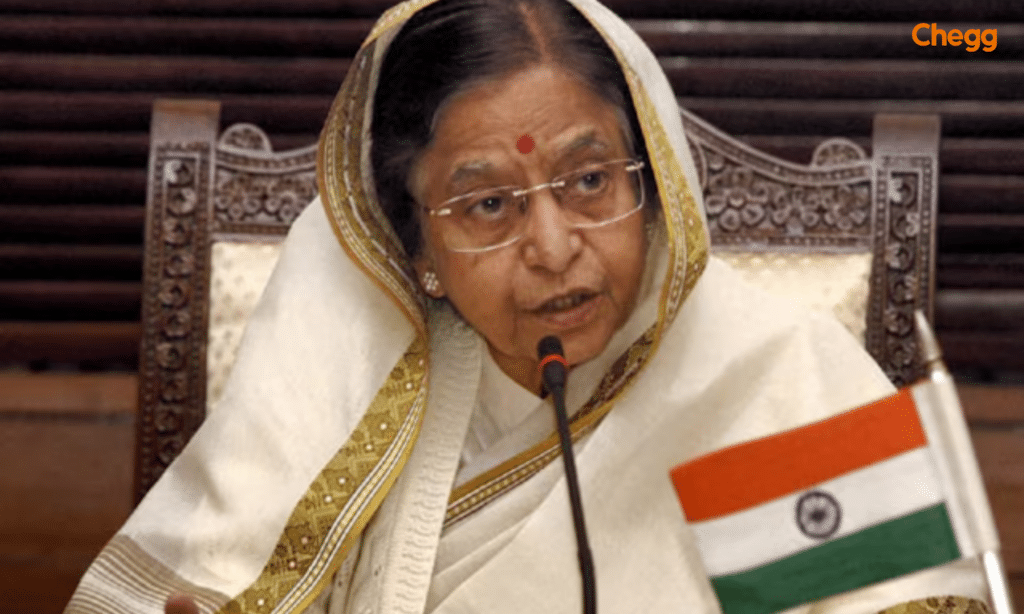
Pranab Mukherjee played the role of finance and foreign minister. He became the 13th president of India in 2017. During his presidency, India faced inflation, corruption, and governance-related issues. His role was crucial in handling these challenges by upholding the Indian Constitution.
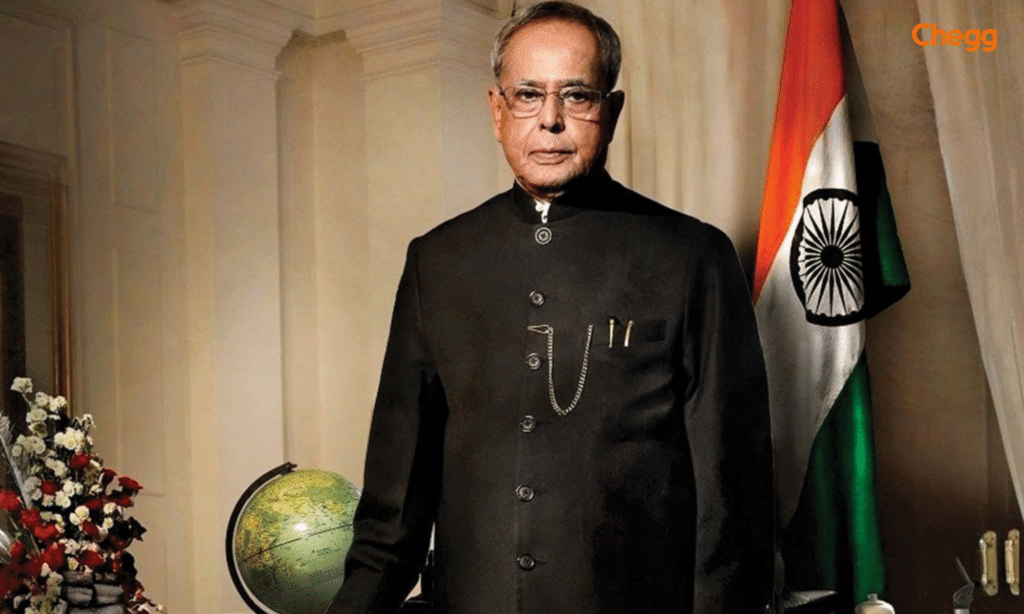
Diplomatic relations were spoken at the international level by our respectable presidents.
Ram Nath Kovind was 14th President (2017-2022). His focus was on the enhancement of the underprivileged communities. Ram Nath Kovind also improved the education, and economic opportunities for marginalized communities.
He visited several countries promoting India’s interest on the international stage. He also encouraged diplomatic relations at the international level.

Droupadi Murmu has broken barriers by becoming India’s first tribal President. Hailing from Odisha, Murmu has extensive political experience from the district to state level, including as Jharkhand’s Governor. Her election in 2022 has cultural significance for underrepresented communities. As President, Murmu draws on her diverse background to represent and unite the aspirations of all Indians. She reflects on the polyphonic nature of Indian democracy.
The President plays many roles in the governance of India. Let us discuss the roles and powers of the Presidents of India.
The Presidency role in Indian governance includes,
Appointment of the Minister and Council of Ministers
Declaring a state of emergency
Has the authority to take extraordinary measures like suspending fundamental rights but these should be used only in critical situations like war, or natural disasters. This decision is taken to maintain the stability of India.
The President’s legislative Role is to safeguard the country’s democratic values and the legal framework. It also prevents potential constitutional violations.
Presidential veto in India is very rare. Because the president usually follows the advice of the Council of Ministers. But if the president exercises a veto then it can lead to a constitutional crisis. During these situations, democratic norms and constitutional principles are considered carefully to resolve.
Rashtrapati Bhavan holds historical significance. A British architect, Edwin Lutyens designed the Rashtrapati Bhavan. This building is an architectural marvel that blends both the Indian and the Western styles. It is a symbol of India’s independence and democracy
Rashtrapati Bhavan is the President’s official residence. It is where state affairs and important government events are hosted.

The Presidential Seal on official documents comprises a national emblem with the words Rashtrapati Bhavan ” and “President’s Secretariat. It represents the role of the President who protects the nation’s integrity.
Also Read:-
All presidents of India improved education by promoting them. They have also given scholarships like Dr. Radhakrishnan provided awards to those who excel in their studies. These things help to encourage the youths to achieve in their studies.
All presidents of India have been involved in social endeavors. They have participated in charitable activities. And have supported social causes which have a huge impact on social welfare. These initiatives have contributed to improving education, and healthcare, and eradicating poverty.
Dr. Rajendra Prasad and Dr. Radhakrishnan contributed to nation-building. A.P.J. Abdul Kalam who was the “People’s President” known for science and youth empowerment. Every president of India shaped India uniquely, reflecting their values.
Politics frequently have an impact on how people view former presidents in the public. Historical perspectives focus on their contributions to supporting the principles of the Constitution. Their acts have long-lasting effects on India’s current governance. And also act as models for aspiring leaders, creating the country’s democratic culture and dedication to advancement.
The List of President Of India from 1947 to 2024 represents the great leaders who sacrificed their lives to protect our nation India. They have made significant contributions to the growth and development of the nation. All presidents of India focused on economic and political stability.
The present president of India, Droupadi Murmu has also made many contributions related to healthcare. They collectively work for gender equality, constitutional international, etc. These leaders have left a place in our hearts by their commendable work. They inspire the youths of tomorrow a lot.
The first President of India was Rajendra Prasad from 1950 to 1962. He helped draft and adopt the Indian Constitution and assisted democracy.
The second president of India was Sarvepalli Radhakrishnan. He has promoted the idea of religious tolerance. And advocated for the philosophical basis of Hinduism.
The current president of India is Droupadi Murmu. She launched ‘Pradhanmantri TB mukht Bharat’ which was launched to eradicate the tuberculosis disease.
The list of the President of India from 1947 to 2020 includes Dr. Rajendra Prasad, Sarvepalli Radhakrishnan, Zakir Husain, V. V. Giri, R. Venkataraman, Dr. A. P. J. Abdul Kalam, Pratibha Patil, Pranab Mukherjee, Ram Nath Kovind and Draupadi Murmu.
The first woman president of India was Pratibha Patil. She addressed the importance of education. And also addressed the economic opportunities for women. She also worked to reduce poverty and healthcare access was improved.
As of 2024, India has had 15 Presidents. The current President is Droupadi Murmu, who took office in 2022.
The President of India is elected by an Electoral College (Elected members of Parliament and State Legislative Assemblies).
The term of the President of India is 5 years.
Ram Nath Kovind is an Indian politician and lawyer who served as the 14th president of India from 2017 to 2022.

Authored by, Amay Mathur | Senior Editor




Amay Mathur is a business news reporter at Chegg.com. He previously worked for PCMag, Business Insider, The Messenger, and ZDNET as a reporter and copyeditor. His areas of coverage encompass tech, business, strategy, finance, and even space. He is a Columbia University graduate.
Editor's Recommendations
Chegg India does not ask for money to offer any opportunity with the company. We request you to be vigilant before sharing your personal and financial information with any third party. Beware of fraudulent activities claiming affiliation with our company and promising monetary rewards or benefits. Chegg India shall not be responsible for any losses resulting from such activities.
Chegg India does not ask for money to offer any opportunity with the company. We request you to be vigilant before sharing your personal and financial information with any third party. Beware of fraudulent activities claiming affiliation with our company and promising monetary rewards or benefits. Chegg India shall not be responsible for any losses resulting from such activities.